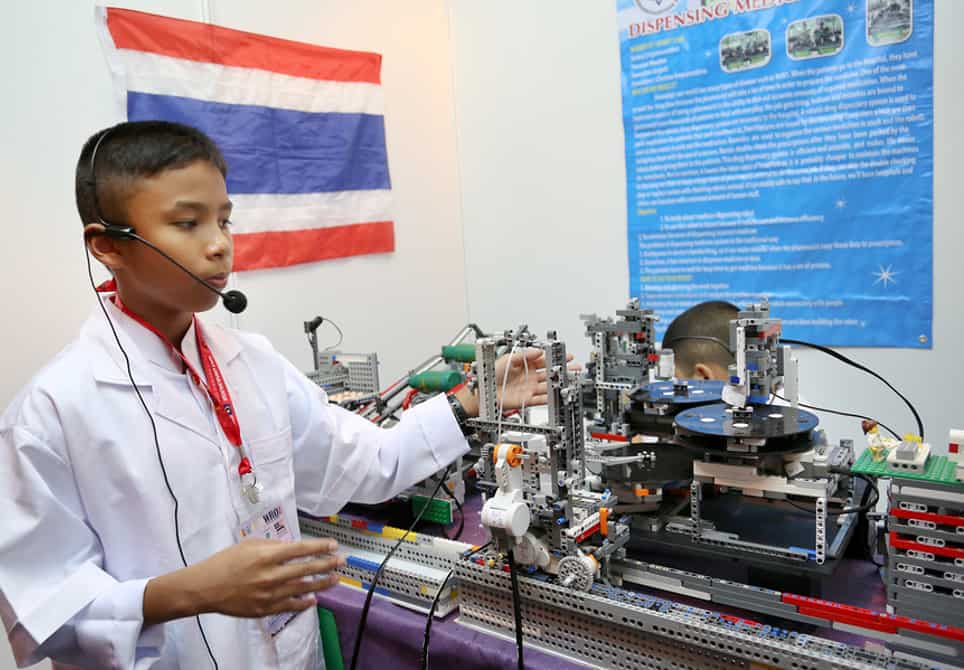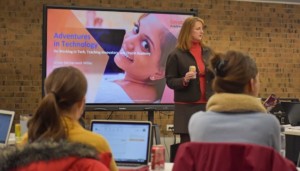3 Tips For Building a STEM Classroom Makerspace

By Lindsay Olsen
If you had to list your favorite learning-based memories from your school days, what would they be? Ask 10 people and you’ll likely come up with 10 nearly identical lists that look something like this:
- Erupting volcano
- Frog dissection
- Hydrogen-powered bottle rocket
The projects mentioned above are likely to stand out in your mind because of their hands-on nature. In 2009, researchers at Purdue found that 8th graders taught through hands-on learning show higher comprehension of concepts than those who learn from textbooks and lectures.
It is safe to assume that children today will list exercises from STEM classrooms when asked about their most memorable learning experiences—but the most memorable of all will likely be those experiences that relied on the STEM principles of learning in a makerspace environment.
Today’s Maker Movement
Independent designers, creators and students inspired the Maker Movement, which continues to transform the way we educate our children. Makerspaces and STEM learning go together like peanut butter and jelly—there’s a natural connection that cannot be denied. They both allow for collaboration and creativity, and magical things happen when the two are combined.
A makerspace can enhance STEM projects, but it is dangerous to think it can replace them. Many STEM projects could benefit from a makerspace environment, but not all makerspace projects rely on STEM principles of learning. In order for the marriage to work, a makerspace project must apply grade-level math and science knowledge.
The following tips can help seamlessly integrate a makerspace into a STEM classroom.
1. Install the right furniture to help support creativity. In your classroom, you’ll need a combination of STEM lab workstations, instructor desks and at least one makerspace. To begin:
- Determine the number of students that will be using the classroom and their age range.
- Figure out how many groups you will have.
- Determine whether you’ll need computers and technology equipment.
Remember that your classroom furniture is meant to facilitate learning, so you’ll want to prepare for various lesson types and situations and allow for flexibility. If your lab is serving students of various ages, use height-adjustable chairs.
For example, many STEM lab design features include learning spaces for younger and older children to work on age-appropriate projects. There is also a central meeting area where children of all ages can work together.
If you’re having trouble planning your space, you may be able to get free design assistance from your furniture supplier.
2. Stock workstations with a variety of tools and materials. Creativity is a crucial component of this type of learning and exploration, so there are no set equipment lists. Include items that have obvious connections to the project, but also add items that have no connection whatsoever. The idea is to spark creativity and get children thinking outside of the box.
The staple items you’ll have in your makerspace will depend on the type of project or lesson, but some common items include Legos, cubelets, Play-Doh, cardboard, LED lights, batteries, copper foil tape, color-coded electronic building blocks, various types of circuits, K’NEX connectors and building blocks.
You may also choose to include various craft items. Pull items from your junk drawer or check the bargain bin at the craft store—anything will work.
It’s rare that a school will be able to afford to fully stock a makerspace all at once. Start with basic general use tools and equipment, and buy used items whenever possible. Consider renting some of the more expensive tools needed until you have a higher budget. If your budget truly does not allow for purchasing things like 3D printers, remember that you can always outsource these types of services.
3. Formulate a plan to keep students on track. Amazing things happen when you give students flexibility and autonomy to learn and create in their own way. However, we all know how easy it is to go astray in the absence of structure. It is imperative to give just the right amount of direction to keep students involved and motivated.
Ask open-ended questions that address a problem without hinting at a solution or type of solution. Learning through problem-solving in this way will give students the experience and understanding to begin solving real-world problems.
With new technological advancements emerging daily, it’s exciting to see classrooms finally evolving to challenge students in new and thought-provoking ways. The marriage of makerspaces and STEM learning may well be the most natural and beneficial educational movement we’ll see in our time. With this effortless blending of collaboration and innovation, it is also a fun time to be a student.
For more, see:
- Prepping a Learning Space to Grow into a Makerspace
- How to Utilize a Makerspace for World Language Learning
- Top 10 Things You Didn’t Know Your Makerspace Needs
Lindsay Olsen is a professional content writer with a passion for education and design. Follow her on Twitter: @lindsay_olsen6
Stay in-the-know with all things EdTech and innovations in learning by signing up to receive the weekly Smart Update.





0 Comments
Leave a Comment
Your email address will not be published. All fields are required.